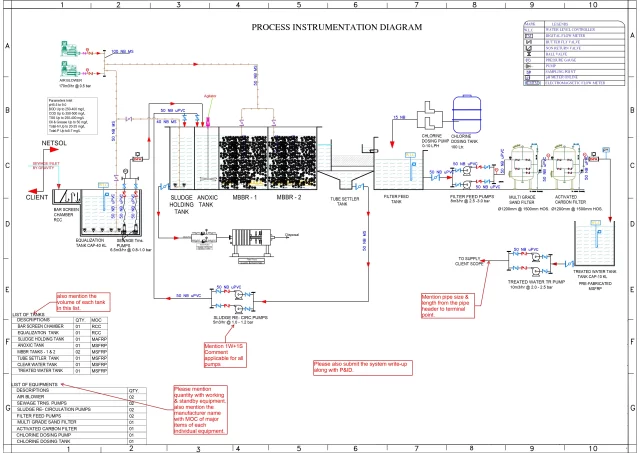Cleaning Microplastics: The New Challenge for Sewage Plants
Microplastics have emerged as one of the most pressing environmental issues of our time. These tiny plastic particles smaller than 5 millimetres infiltrate our water systems through everyday activities like washing synthetic clothes or using personal care products. As these particles flow through our drainage systems, they end up at sewage treatment plants which now face the enormous task of filtering out these microscopic pollutants. Traditional sewage plants were designed to remove organic waste and larger debris but microplastics present an entirely different challenge. Their small size allows them to slip through conventional filtering systems, which means that many treatment facilities must adapt their processes to address this growing problem. The impact of microplastics extends far beyond sewage plants as these particles make their way into rivers oceans and even our drinking water. This creates risks for marine life human health and entire ecosystems. Understanding how sewage plants can effectively remove microplastics from wastewater has become essential for protecting both environmental and public health.
Current Challenges in Microplastic Filtration
The removal of microplastics at sewage treatment facilities presents unique obstacles that traditional water treatment methods struggle to overcome. The varying sizes, shapes and chemical compositions of microplastics make them particularly difficult to filter out using conventional systems. Let us examine the specific challenges that sewage plants face when dealing with these persistent pollutants.
1. Size Variability: Most sewage plants use filters designed for larger debris but microplastics range from 5 millimeters down to nanometer scale. The smallest particles pass straight through standard filtering meshes. This creates a need for more sophisticated filtration systems that can capture particles across multiple size ranges.
2. Chemical Composition: Microplastics come in many different polymer types each with distinct chemical properties. Some float while others sink. Some break down into even smaller particles while others remain intact. Treatment plants must develop methods to address the diversity of materials that affect how the particles behave during the treatment process.
3. Volume Management: The sheer quantity of microplastics entering sewage systems poses a major challenge. Urban areas generate millions of gallons of wastewater daily containing countless microplastic particles. Treatment plants must handle this constant influx while maintaining efficient operations.
Innovative Solutions for Microplastic Removal
Sewage treatment plants have started implementing new technologies and methods to handle the microplastic challenge. These innovations show promising results in capturing these elusive pollutants. Let us explore the cutting-edge solutions that make microplastic removal more effective.
- Advanced Filtration Systems: New filtration technologies use combinations of different mesh sizes and materials to catch microplastics. Membrane bioreactors represent one breakthrough as they combine biological treatment with ultrafine filtration. This process captures particles as small as 0.1 micrometres.
- Biological Treatment Methods: Scientists have discovered certain bacteria strains that can break down specific types of plastics. Treatment plants have started experimenting with these biological agents in controlled environments. The microorganisms help decompose plastic particles into less harmful compounds.
- Chemical Processing Techniques: Modern chemical treatments target microplastics through processes like coagulation and flocculation. These methods cause microplastics to clump together, making them easier to filter out. Treatment plants combine these chemical processes with physical filtration for better results.
Future Developments and Integration
The field of microplastic removal continues to evolve as new research emerges and technology advances. Treatment plants must prepare for upcoming changes and improvements in filtration methods. Let us examine what the future holds for sewage treatment facilities tackling microplastic pollution.
A. Smart Monitoring Systems: Digital sensors and artificial intelligence now help treatment plants track microplastic levels in real time. This allows operators to adjust filtration processes based on actual contamination levels. The data collected also helps improve system efficiency over time.
B. Sustainable Disposal Methods: As more microplastics get filtered out, treatment plants need sustainable ways to dispose of captured particles. New recycling technologies transform recovered microplastics into useful materials. This creates a circular economy approach to plastic waste management.
C. International Collaboration: Treatment facilities worldwide share knowledge and resources to improve microplastic removal techniques. This global cooperation leads to faster adoption of successful methods and better standardization of treatment processes.
Take Action for Better Water Treatment:
Cleaning microplastics at sewage plants requires ongoing innovation and commitment. If you want to learn more about how your local treatment facility handles microplastic removal, contact your water management authority. For businesses interested in implementing advanced filtration systems, our team of experts can provide detailed information about available solutions. Together, we can work toward cleaner water systems and a healthier environment. Get in touch today to discuss how you can support or benefit from improved microplastic filtration methods.
To explore customised commercial RO plant, Industrial RO plant, ETP or Sewage Treatment Plants solutions for your needs in your areas and nearby regions, Contact Netsol Water at:
Phone: +91-965-060-8473
Email: enquiry@netsolwater.com











